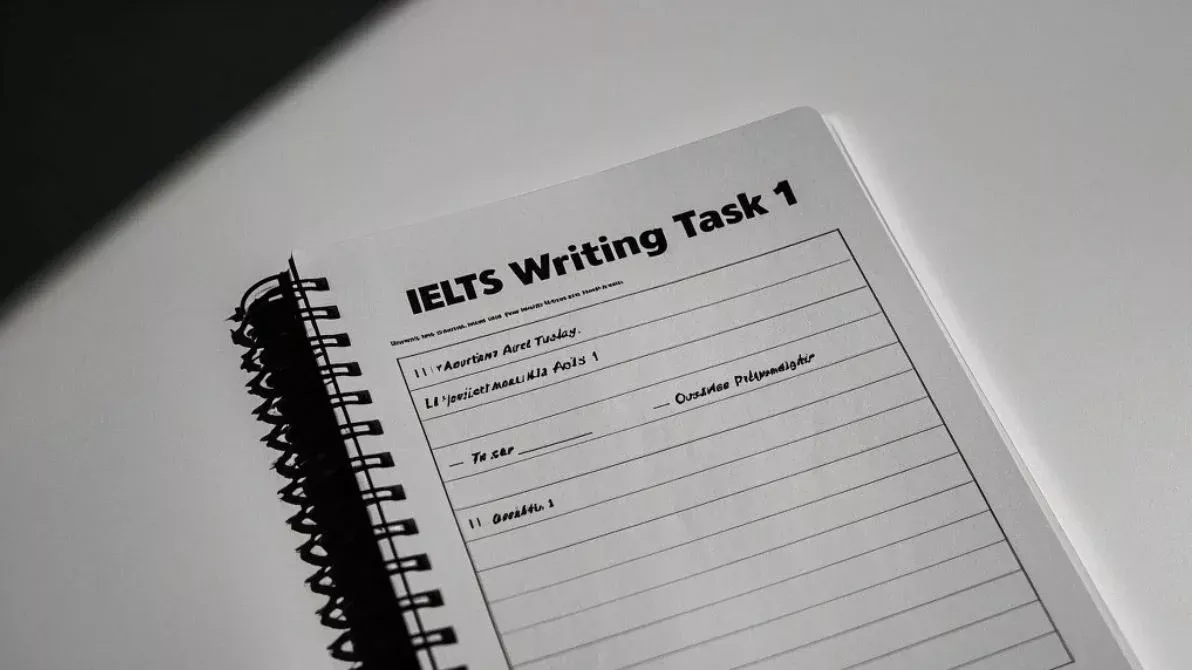IELTS Reading 26: Importance of regular exercise là chủ đề thuộc chuỗi bài luyện tập 11 dạng bài IELTS Reading và các bài tập luyện tập.
Học lại bài cũ: IELTS Reading 25: The development of traditional medicine.
IELTS Reading: Importance of regular exercise
Exercise plays a pivotal role in maintaining overall health and well-being. With the rise of sedentary lifestyles, many individuals are becoming increasingly aware of the importance of incorporating regular physical activity into their daily routines. From improving cardiovascular health to boosting mental well-being, the benefits of regular exercise are well-documented and profound.
Physical Health Benefits
One of the most immediate and noticeable benefits of exercise is its effect on physical health. Regular physical activity strengthens the heart, improving its ability to pump blood more efficiently, thereby reducing the risk of heart diseases. It also helps to manage weight, as exercise burns calories and builds muscle, increasing the body’s metabolism. Furthermore, exercise has been proven to lower blood pressure and improve cholesterol levels, reducing the chances of developing chronic conditions such as hypertension and type 2 diabetes.
Another key benefit is the enhancement of bone and muscle strength. Weight-bearing exercises such as walking, running, and resistance training contribute to stronger bones, helping to prevent conditions like osteoporosis. Stronger muscles not only improve physical performance but also help to protect joints from injury. Additionally, regular exercise can improve flexibility and balance, which are crucial for preventing falls, especially in older adults.
Mental Health Benefits
Exercise is not just about physical health—it also has significant mental health benefits. Physical activity stimulates the production of endorphins, chemicals in the brain that act as natural mood lifters. This can help reduce feelings of stress, anxiety, and depression. Studies have shown that people who exercise regularly tend to have more positive outlooks on life, experience less stress, and enjoy better sleep patterns.
Exercise also improves cognitive function. Regular physical activity has been linked to better memory, quicker learning, and improved problem-solving skills. Some research suggests that exercise may even reduce the risk of cognitive decline as people age, helping to protect against diseases such as Alzheimer’s.
The Social Aspect
In addition to the physical and mental health benefits, exercise can also have a positive impact on social well-being. Participating in group exercises such as team sports or fitness classes allows individuals to connect with others, fostering a sense of community and belonging. Social interaction during exercise can provide emotional support, encourage consistency, and make the experience more enjoyable.
Moreover, exercising with others can increase motivation and accountability. People are more likely to stick to their exercise routines when they have a workout partner or participate in group activities. This consistency is key to achieving long-term health benefits.
The Challenges of Regular Exercise
Despite its many benefits, maintaining a regular exercise routine can be challenging for many people. Time constraints, lack of motivation, and physical limitations are common barriers. Some individuals may feel intimidated by the idea of going to the gym or starting a new fitness routine, while others may struggle with balancing work, family, and exercise.
However, it is important to note that regular exercise does not have to involve intense workouts or long hours at the gym. Simple activities like walking, cycling, or even taking the stairs instead of the elevator can contribute to one’s daily physical activity levels. Finding an activity that is enjoyable is crucial to maintaining a long-term exercise habit. Additionally, setting realistic goals and gradually increasing the intensity of workouts can help individuals stay on track.
The importance of regular exercise cannot be overstated. It provides numerous physical, mental, and social benefits, contributing to a higher quality of life. While there may be challenges in establishing a consistent exercise routine, finding enjoyable activities and staying motivated can help individuals reap the rewards of a healthier, more active lifestyle.
Question
1. Multiple Choice (Chọn đáp án đúng)
Câu hỏi: Which of the following is not a physical benefit of regular exercise mentioned in the passage?
A. Improved cholesterol levels
B. Stronger muscles
C. Reduced risk of Alzheimer’s disease
D. Reduced risk of osteoporosis
2. True/False/Not Given (Đúng/Sai/Không có thông tin)
Câu hỏi:
- Regular exercise is the only way to reduce the risk of heart diseases.
- Physical activity can help prevent diabetes.
- People who exercise tend to have shorter sleep patterns.
3. Yes/No/Not Given (Có/Không/Không có thông tin)
Câu hỏi:
- The passage suggests that exercising with others increases motivation.
- The author believes that intense workouts are necessary for everyone.
- The article states that team sports are better than individual exercise routines.
4. Matching Information (Ghép thông tin)
Câu hỏi: Match each of the following pieces of information with the correct paragraph.
i. Exercise helps prevent cognitive decline.
ii. Social interactions during exercise provide emotional support.
iii. Regular physical activity can improve heart function.
5. Matching Headings (Ghép tiêu đề)
Câu hỏi: Match the headings to the paragraphs in the passage.
Headings:
A. The Link Between Exercise and Mental Health
B. Overcoming Barriers to Regular Exercise
C. The Role of Physical Activity in Social Connections
D. Benefits of Exercise for Heart and Bones
6. Matching Sentence Endings (Ghép kết thúc câu)
Câu hỏi: Complete the sentences by matching them with the correct endings.
- Exercise helps improve muscle strength…
- Physical activity stimulates the production of endorphins…
- Group exercises increase motivation…
Endings:
a. and make physical activity more enjoyable.
b. which leads to better mood and reduced anxiety.
c. by increasing metabolism and protecting joints.
7. Sentence Completion (Hoàn thành câu)
Câu hỏi: Complete the sentences with no more than three words.
- Regular exercise helps prevent __________ diseases such as type 2 diabetes.
- The production of endorphins helps reduce feelings of __________ and depression.
- Strong muscles protect joints from __________.
8. Summary Completion (Hoàn thành bản tóm tắt)
Câu hỏi: Complete the summary below using words from the passage.
Regular exercise contributes to better physical health by strengthening the heart and lowering blood pressure. It also helps to improve mental well-being by producing __________, which lift the mood. In addition, social benefits arise when participating in group exercises, offering opportunities for __________ and emotional support.
9. Diagram Label Completion (Hoàn thành nhãn sơ đồ)
Câu hỏi: Label the diagram below based on the information in the passage.
(Sơ đồ minh họa sự liên kết giữa sức khỏe tim mạch, cơ xương và sức khỏe tinh thần từ bài viết.)
- Label 1: __________ (chức năng tim mạch)
- Label 2: __________ (lợi ích cơ xương)
- Label 3: __________ (tác động tinh thần)
10. Short Answer Questions (Câu hỏi trả lời ngắn)
Câu hỏi: Answer the following questions using no more than two words.
- What type of diseases can exercise help to prevent?
- Which chemical in the brain is associated with mood improvement?
- What type of exercise helps improve bone strength?
11. Table/Flowchart/Note Completion (Hoàn thành bảng/sơ đồ dòng/chú thích)
Câu hỏi: Complete the table using no more than three words from the passage.
| Benefit | Physical or Mental | Description |
|---|---|---|
| Stronger muscles | Physical | Increased metabolism and joint support |
| Improved mood | Mental | Production of __________ |
| Enhanced flexibility and balance | Physical | Helps prevent __________ in older adults |
Answers
1. Multiple Choice (Chọn đáp án đúng)
Câu hỏi: Which of the following is not a physical benefit of regular exercise mentioned in the passage?
Đáp án: C. Reduced risk of Alzheimer’s disease (This is mentioned as a mental benefit, not a physical one).
2. True/False/Not Given (Đúng/Sai/Không có thông tin)
- Regular exercise is the only way to reduce the risk of heart diseases: False (Exercise is one way, but the passage does not say it’s the only way).
- Physical activity can help prevent diabetes: True (The passage mentions that exercise helps reduce the risk of type 2 diabetes).
- People who exercise tend to have shorter sleep patterns: False (The passage states that people who exercise tend to have better sleep patterns, not shorter).
3. Yes/No/Not Given (Có/Không/Không có thông tin)
- The passage suggests that exercising with others increases motivation: Yes (The passage discusses how exercising with others increases motivation and accountability).
- The author believes that intense workouts are necessary for everyone: No (The passage states that simple activities like walking can also contribute to health benefits).
- The article states that team sports are better than individual exercise routines: Not Given (The passage discusses the benefits of group exercises but does not compare them to individual routines).
4. Matching Information (Ghép thông tin)
i. Exercise helps prevent cognitive decline: Paragraph “Mental Health Benefits”
ii. Social interactions during exercise provide emotional support: Paragraph “The Social Aspect”
iii. Regular physical activity can improve heart function: Paragraph “Physical Health Benefits”
5. Matching Headings (Ghép tiêu đề)
A. The Link Between Exercise and Mental Health: Paragraph “Mental Health Benefits”
B. Overcoming Barriers to Regular Exercise: Paragraph “The Challenges of Regular Exercise”
C. The Role of Physical Activity in Social Connections: Paragraph “The Social Aspect”
D. Benefits of Exercise for Heart and Bones: Paragraph “Physical Health Benefits”
6. Matching Sentence Endings (Ghép kết thúc câu)
- Exercise helps improve muscle strength…
Đáp án: c. by increasing metabolism and protecting joints. - Physical activity stimulates the production of endorphins…
Đáp án: b. which leads to better mood and reduced anxiety. - Group exercises increase motivation…
Đáp án: a. and make physical activity more enjoyable.
7. Sentence Completion (Hoàn thành câu)
- Regular exercise helps prevent chronic diseases such as type 2 diabetes.
- The production of endorphins helps reduce feelings of stress and depression.
- Strong muscles protect joints from injury.
8. Summary Completion (Hoàn thành bản tóm tắt)
Regular exercise contributes to better physical health by strengthening the heart and lowering blood pressure. It also helps to improve mental well-being by producing endorphins, which lift the mood. In addition, social benefits arise when participating in group exercises, offering opportunities for social interaction and emotional support.
9. Diagram Label Completion (Hoàn thành nhãn sơ đồ)
- Label 1: Cardiovascular function (chức năng tim mạch)
- Label 2: Muscle and bone strength (lợi ích cơ xương)
- Label 3: Mental well-being (tác động tinh thần)
10. Short Answer Questions (Câu hỏi trả lời ngắn)
- What type of diseases can exercise help to prevent? Chronic diseases
- Which chemical in the brain is associated with mood improvement? Endorphins
- What type of exercise helps improve bone strength? Weight-bearing exercises
11. Table/Flowchart/Note Completion (Hoàn thành bảng/sơ đồ dòng/chú thích)
| Benefit | Physical or Mental | Description |
|---|---|---|
| Stronger muscles | Physical | Increased metabolism and joint support |
| Improved mood | Mental | Production of endorphins |
| Enhanced flexibility and balance | Physical | Helps prevent falls in older adults |















